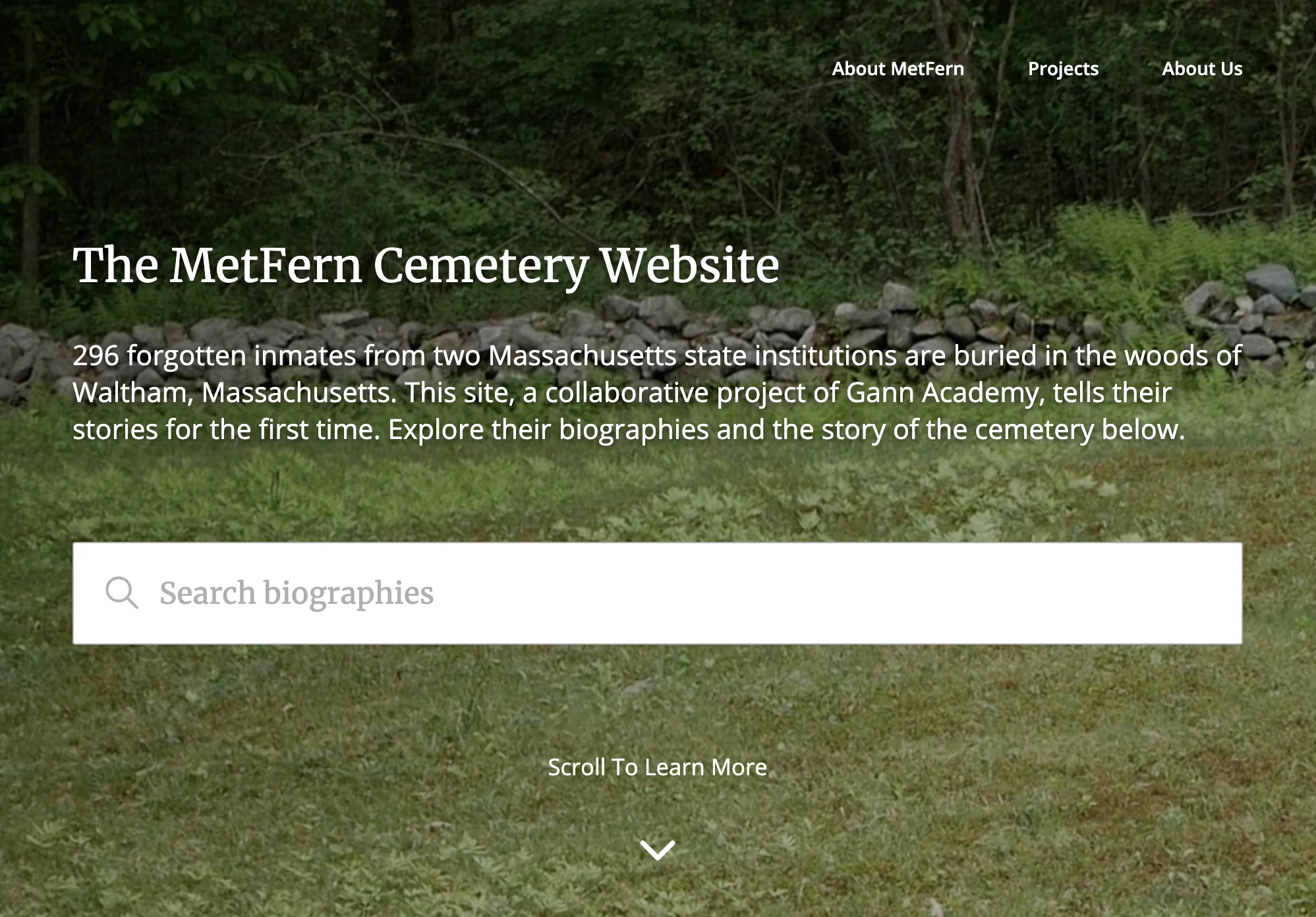Project
MetFern Cemetery Website
October 2018
During my junior year of high school, I had the opportunity to participate in an American disability history class, with a focus on the MetFern Cemetery, near my school. The MetFern Cemetery is a cemetery where mistreated individuals from two Massachusetts institutions were buried. You can learn more about the cemetery here or in my other project post about the cemetery. My classmates and I researched the lives of individuals buried there and by the end of the year, wrote 296 biographies, one for each person.
After such an incredible class achievement, I saw an opportunity to put my programming expertise to use on a meaningful cause. I discussed the possibility of creating a website for the cemetery that documented not only our work as a class on the project, but also all nearly-300 biographies, so that anyone with internet access could learn about the lives of the people buried in the cemetery. My teacher loved the idea.
Hundreds of hours later, and with the incredible help of teachers and editors, the website is now complete. You can view a live version of it at metferncemetery.org.
The website includes a Netflix-like scroller for navigating between biographies as well as an interactive map; click on a plot on the map and the slider will whoosh to that person. There are a number of statically generated pages that are populated with data automatically at build time and a projects page that documents our work.
Since the website served as a flagship for our work surrounding American disability history, it was important for the website to be accessible to screen-readers and keyboard-only navigation. So after completing the website, I went back and added keyboard navigation to every single page, as well as advanced screen reader capabilities to some of the more complex interfaces, such as the biography search and the burial slider.
The site was also accessibility-tested automatically on every change using the axe-core/react library to ensure that colors have sufficient contrast, pages have all the necessary aria landmarks, and more.
In tandem with the cemetery website, I worked on a data manipulation library focused on extracting meaningful data from our dataset on the people buried. I have written more on that topic in a separate project post. Read about the data manipulation library here – including a narrative recount of my American disability history experience.
